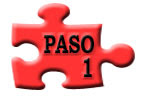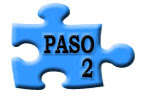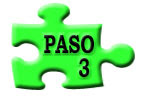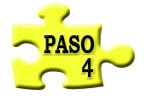Según la Encuesta de Población Activa (EPA) del Instituto Nacional de Estadística, la tasa de paro entre los menos formados duplica a la de los universitarios; cuanto más elevado es el nivel educativo, menor es la pérdida de empleo. Quienes sólo lograron cursar primaria tienen una tasa de paro del 25,4%; quienes estudiaron la primera fase de secundaria (ESO)registran un desempleo del 23,6%; para quienes finalizaron la segunda fase de secundaria (Bachillerato) el paro se acerca al 17,3%. Los universitarios son quienes menos sufren el desempleo, con un 9,5% de tasa de paro. Y entre los doctores el desempleo es aún menor.

(According to the Labour Force Survey (LFS) of the National Institute of Statistics, the rate of unemployment among the less educated is twice that of the graduates, the higher the educational level, the lower the loss of employment. Those who only managed to attend school have an unemployment rate of 25.4%, those who studied the first stage of secondary school record an unemployment rate of 23.6%, for those who completed the second phase of high school unemployment is about 17.3%. College students are the least suffering unemployment, with 9.5% unemployment rate. And unemployment among doctors is even smaller.)
Seguir leyendo...Ahora que habéis aprobado Selectividad tenéis que decidir, si no lo habéis hecho ya, qué estudiar. Aquí van 5 pasos que os pueden ayudar a hacerlo.
(Now that you have passed Selectividad you have to decide, if you have not already done so, what to study. Here are five steps that can help you.
 Auto-evaluación de los intereses. Escribe una lista de actividades, asignaturas y temas que te interesen, te inspiren. ¿Qué te gusta y qué no te gusta - del colegio, tus aficiones, el trabajo?
Auto-evaluación de los intereses. Escribe una lista de actividades, asignaturas y temas que te interesen, te inspiren. ¿Qué te gusta y qué no te gusta - del colegio, tus aficiones, el trabajo?
(Step 1: Self-Assessment of interests. Write down a list of activities, course subjects, and topics that interest you, inspire you. What are your likes and dislikes - about school, hobbies, work?)
 Examen de habilidades y capacidades. Uno de los elementos más importantes en la elección de una titulación (y una futura carrera) es un repaso realista de tus puntos fuertes y débiles, destrezas y habilidades. Es importante tener una visión honesta de las asignaturas/capacidades en las que eres mejor, así como aquellas que te resultan difíciles. Escribe las habilidades que quieres utilizar y en las que destacas, así como aquellas que no quieres utilizar y no son tu punto fuerte.
Examen de habilidades y capacidades. Uno de los elementos más importantes en la elección de una titulación (y una futura carrera) es un repaso realista de tus puntos fuertes y débiles, destrezas y habilidades. Es importante tener una visión honesta de las asignaturas/capacidades en las que eres mejor, así como aquellas que te resultan difíciles. Escribe las habilidades que quieres utilizar y en las que destacas, así como aquellas que no quieres utilizar y no son tu punto fuerte.
(Step 2: Examination of skills and abilities. One of the most important elements in choosing a major (and a future career) is a realistic review of your strengths and weaknesses, skills and abilities. It’s important to take an honest view of the subjects/skills you are best at, as well as those you struggle with. Write down the skills that you want to use and excel at, as well as the skills that you don't want to use or are weak in.)
 Comprender lo que valoras del trabajo. Diferentes profesiones y carreras ofrecen una gama de recompensas intrínsecas a las personas que trabajan en ellas. ¿Qué buscas en tu carrera? Algunos ejemplos incluyen ayudar a la sociedad, trabajar bajo presión, la afiliación de grupo, la estabilidad, la seguridad, el estatus social, la recompensa financiera. Escribe una lista de lo que buscas en tu futura carrera.
Comprender lo que valoras del trabajo. Diferentes profesiones y carreras ofrecen una gama de recompensas intrínsecas a las personas que trabajan en ellas. ¿Qué buscas en tu carrera? Algunos ejemplos incluyen ayudar a la sociedad, trabajar bajo presión, la afiliación de grupo, la estabilidad, la seguridad, el estatus social, la recompensa financiera. Escribe una lista de lo que buscas en tu futura carrera.
(Step 3: Understanding what you value about work. Different jobs and careers provide a range of intrinsic rewards to people working in them. What are you seeking from your career? Some examples include helping society, working under pressure, group affiliation, stability, security, social status, financial rewards. Write down a list of what you seek from your future career.)
 Investigación de ocupaciones y carreras. Muchos estudiantes tienen una idea de los tipos de trabajo que deseen hacer, pero rara vez tienen una idea clara de los requisitos de ese trabajo - o incluso lo que ese trabajo implica plenamente. Este paso implica recabar información sobre una o varias carreras potenciales.
Investigación de ocupaciones y carreras. Muchos estudiantes tienen una idea de los tipos de trabajo que deseen hacer, pero rara vez tienen una idea clara de los requisitos de ese trabajo - o incluso lo que ese trabajo implica plenamente. Este paso implica recabar información sobre una o varias carreras potenciales.
Guía de orientación universitaria
Guía de profesiones
Guía de nuevas profesiones
Listado de profesiones
Infoempleo
(Step 4: Researching Occupations and Careers. Many students have an idea of the types of work they may want to do, but rarely do they have a full understanding of the requirements of the work -- or even what the work fully entails. This step involves conducting research and recording the information you found about one or more potential career fields.)
 Revisión de la información y valoración realista de tus capacidades. Es el momento de llevar a cabo una evaluación honesta de si tus habilidades, intereses y valores coinciden con las carreras que más te interesan. Escribe la lista de las carreras y el empleo que mejor se ajuste a ti, comenzando con la carrera que mejor parezca ajustarse a tus intereses y habilidades.
Revisión de la información y valoración realista de tus capacidades. Es el momento de llevar a cabo una evaluación honesta de si tus habilidades, intereses y valores coinciden con las carreras que más te interesan. Escribe la lista de las carreras y el empleo que mejor se ajuste a ti, comenzando con la carrera que mejor parezca ajustarse a tus intereses y habilidades.
(Step 5: Information review and realistic assessment of your abilities. It’s time to conduct an honest appraisal of whether your skills, interests, and values are a good match with the careers that most excite you. Write down the list of careers and jobs that best fit you, starting with the career that best seems to fit your interests and skills.)
Bueno y ahora os toca elegir. ¡Suerte!
(Now, it's your turn. Good luck!)














No hay comentarios :
Publicar un comentario